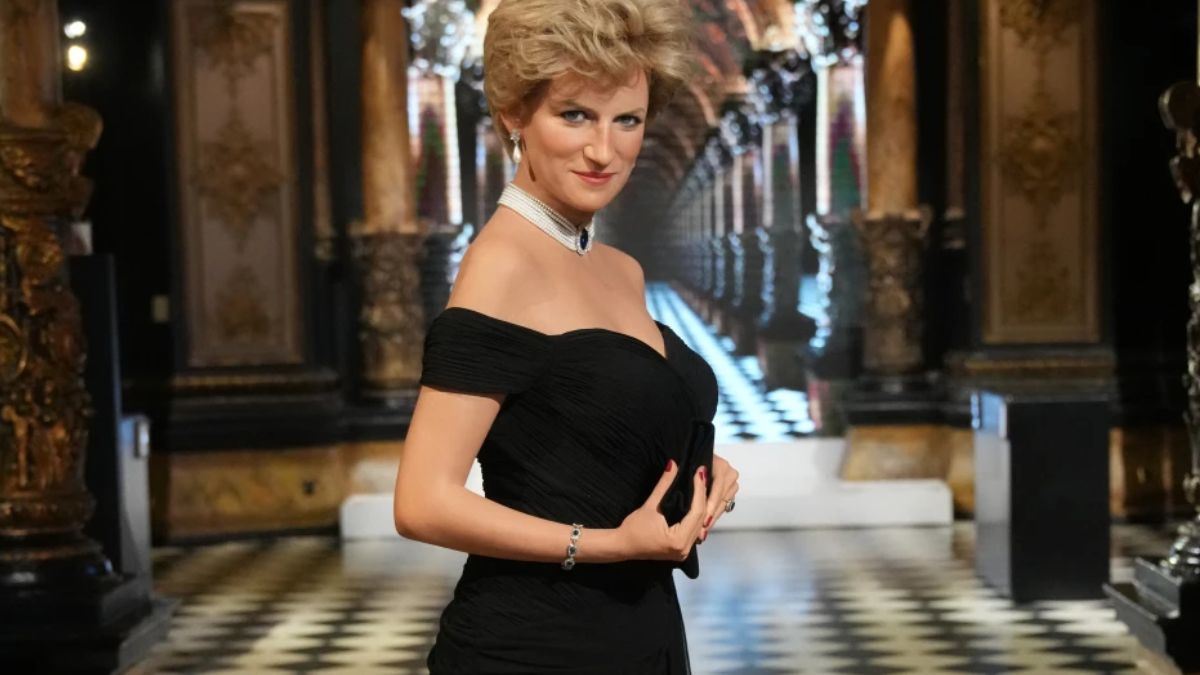Her name has long been associated with grace, elegance and remarkable resilience.
Among the many cultural moments Princess Diana gifted the world, few remain as unforgettable as the evening she stepped out in what would later be immortalised as the “revenge dress” on June 29, 1994.
That singular moment has now been captured in wax.
On Thursday, November 20, 2025, Paris’ famed Grévin Museum unveiled a new figure of Diana — dressed in the iconic black ensemble that came to redefine her image and global influence.
Though the museum already displayed sculptures of King Charles III and the late Queen Elizabeth II, Diana’s absence had been a long-noted omission.
With this addition, one of the most beloved members of the British royal family finally joins the collection.
The story behind ‘revenge dress’
It was the summer of 1994.
Princess Diana was preparing to attend a fundraising gala at the Serpentine Gallery in Kensington Gardens.
What she chose to wear that night was decided at the very last moment — a decision that would ripple through fashion, media and royal history.
On that same evening, Prince Charles appeared on national television and openly acknowledged his infidelity with Camilla Parker Bowles.
The revelation stunned the world.
Knowing the news would dominate headlines, Diana refused to retreat from public view. Instead, she faced the moment head-on.
Christina Stambolian, a Greek designer known for bold, figure-hugging silhouettes, had created a daring off-the-shoulder black chiffon dress that Diana had purchased years earlier but never worn.
Quick Reads
View AllThat night, she chose it — and it instantly became historic.
By the following morning, Prince Charles’ confession had been pushed off the front pages, overshadowed entirely by Diana’s striking appearance.
Why this black dress became “revenge”
After Charles’ admission, Diana’s appearance in the Stambolian dress was widely interpreted as a powerful signal — a woman reclaiming her narrative at a moment of immense personal upheaval.
Royal commentator Richard Fitzwilliams observed, “Diana clearly stole the show that day.”
“The ‘revenge dress’ was a triumph for Diana,” he added.
“She told the world in the most dramatic way what she felt and instantly won people’s sympathies. Charles didn’t understand PR. The only thing people remembered from that interview was that he admitted adultery. For him, it was a public relations catastrophe," Fitzwilliams added.
Short, fitted and daringly contemporary for a royal, the dress showcased a confident Diana who had decided she would no longer be defined by palace norms or marital turmoil.
It was widely interpreted as her silent but unmistakably powerful response to Charles’ televised confession.
How the dress was a break from royal convention
Royal dressing conventions traditionally emphasised modesty, muted colours and avoidance of anything too revealing.
Black, in particular, was reserved mainly for mourning or sombre occasions.
Christina Stambolian’s creation — a sleek black silk dress with a dramatic neckline — broke with these unwritten rules.
Diana paired the dress with a multi-strand pearl choker featuring a large sapphire — another choice that drew attention for its symbolism.
According to Wild, “Throughout history, pearls symbolized virginity and purity because of the way they are produced. Wearing a pearl on the evening that her husband is talking about adultery is very telling.”
“Diana was incredibly personal. And incredibly indiscreet. She was saying exactly what she felt with the help of this dress and necklace,” Wild added.
Why the world still obsesses over the revenge dress
Princess Diana was a natural communicator who intuitively understood the power of imagery.
That night, she used fashion to reclaim agency — both as a woman and as a global figure constantly scrutinised by the media.
The “revenge dress” moment is often viewed as a major turning point in her life, symbolising independence, in the face of personal crisis.
The moment’s legacy endures because it encapsulated something rare: a woman, deeply wronged, choosing confidence over collapse and rewriting her own narrative before the world’s eyes.
With the Grévin Museum’s new wax figure, that moment lives on
With Inputs from agencies
)